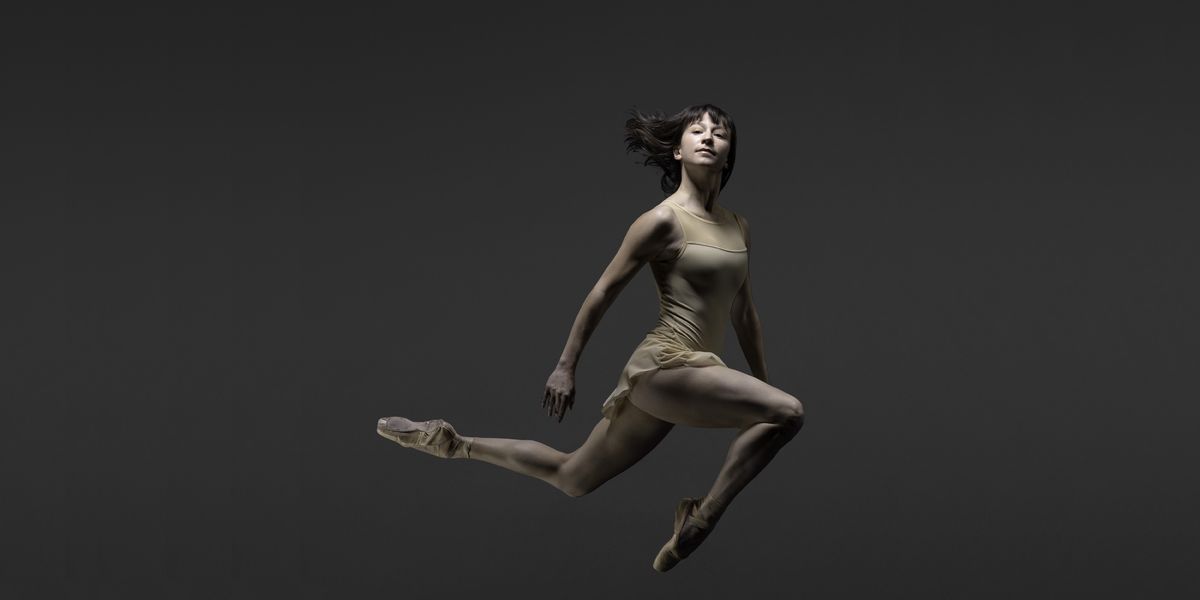Why You Don't Need To Be The Company Star To Be a Company Leader
This story originally appeared in the June/July 2016 issue of
Pointe.
From the outside, one might assume that the stars onstage are leaders offstage, too. It might be so, but life in a company is usually more complex. Opportunities to volunteer, teach or represent fellow colleagues allow dancers at any rank to develop important skills and make their voices heard. Others take the lead simply by lifting company morale or setting a good example in the studio. In fact, leadership takes many forms—and you don’t have to be a principal ballerina to be an influential company member whom others look up to. For these three dancers, stepping into leadership roles has given greater meaning and fulfillment to their careers.
 Overholt in Balanchine’s “Symphony in Three Movements.” Photo by Julian Duque, Courtesy Miami City Ballet.
Overholt in Balanchine’s “Symphony in Three Movements.” Photo by Julian Duque, Courtesy Miami City Ballet.
Get Involved, Give Back
Miami City Ballet corps member Lexie Overholt is always looking for opportunities to get involved. “When I was on full scholarship at Miami City Ballet School, I realized I wanted to give back to the ballet because they gave so much to me,” she says. “Leadership is a natural calling for me, so I dive in whenever there are things I can do.”
Now in her fifth season with the company, Overholt volunteers in almost all parts of the organization. She participates in outreach projects and lecture demonstrations at community schools. She also serves on the Upper Room committee, a group that plans events for young patrons. Overholt even helped connect Miami City Ballet to the Make-A-Wish Foundation. “Now if there is a child in South Florida whose wish it is to be a ballet dancer, we get to share a day with them.”
 Overholt at an MCB outreach event. Photo by WorldRedEye.com, Courtesy Adrienne Arsht Center.
Overholt at an MCB outreach event. Photo by WorldRedEye.com, Courtesy Adrienne Arsht Center.
As a testament to her leadership skills, Overholt was nominated to be one of three representatives for Miami City Ballet. “We serve as a liaison between dancers and administration during contract negotiations,” she explains, a job that requires her to navigate potential conflicts with management. “It helps us understand in greater depth the unique perspective of both sides.”
Terez Dean, a dancer with Smuin Ballet, makes a point to learn about all aspects of her company, especially on the administrative end. She attends development and marketing meetings when she can, and always volunteers to step into a focus group. “It’s important for dancers to give our input,” she says. “We can talk about how we see our company evolving, and how we want to show that to the public.” And in a business that’s reliant on outside support and donations, Dean makes a special effort to maintain good relationships with patrons and other community members. “You never know who you’re going to cross paths with in the future.”
 Sundermeier as Myrtha in “Giselle.” Photo Courtesy Royal Winnipeg Ballet.
Sundermeier as Myrtha in “Giselle.” Photo Courtesy Royal Winnipeg Ballet.
For Royal Winnipeg Ballet principal Jo-Ann Sundermeier, leading from the front of the studio gives her a special feeling of gratification. She will sometimes teach a master class to local students when the company is on tour. She also teaches for both the Royal Winnipeg Ballet School and the Aspirant Program (RWB’s pre-professional group in which students have the opportunity to dance in large company productions).
“Teaching is a different kind of fulfillment than I get from dancing because I have direct interaction with the students,” she says. “They take my advice to heart.”
Set the Standard
Sometimes leadership is not so much about what outside roles you take on, but about how you behave and treat your fellow dancers. “I take my job very seriously,” says Sundermeier, who tries to set a good example for all ranks of the company, not just the younger dancers. “I make sure I’m neat and show up to rehearsals on time. I conduct myself professionally in the studio and backstage at the theater, and I’m always listening.”
Lending an ear or a helping hand to dancers in need also boosts morale and creates a more welcoming atmosphere. Sundermeier makes a conscious effort to be approachable, especially when dancers come to her for advice about roles she’s done. “I talk to them about my experience, like my thoughts on musicality or how I felt.” When new dancers join MCB, Overholt has been known to help them with their taxes or even find an apartment. Dancing, she says, is just one aspect of her job. “It’s so important to be engaged and to know everyone,” she says. “It makes what I do all the more rewarding.”
 Dean and Christopher Squires in Amy Seiwert’s “Dear Miss Cliine.” Photo by David DeSilva, Courtesy Smuin Ballet.
Dean and Christopher Squires in Amy Seiwert’s “Dear Miss Cliine.” Photo by David DeSilva, Courtesy Smuin Ballet.
When Dean suffered a serious injury a few years back, she still found ways to help out and feel connected. “I went into the studio almost every day when I wasn’t at physical therapy,” she remembers. “I felt it was my responsibility to be a motivator for my colleagues.” Dean watched rehearsals and performances, cheering for the dancers and being an open ear for their frustrations. “I was there every day to remind everyone how fortunate we are to work.”
Because of her leadership experience, Dean feels more well-rounded, and she thinks she will have an easier time transferring into another professional environment when the time comes. “I know that my passion for working with others will continue to flourish in my next career,” she says. “Being a leader in dance is being a leader in life.”





